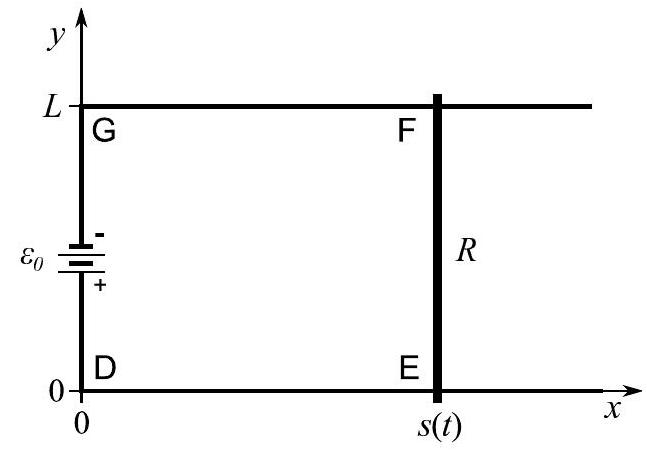Paper 3, Section II, D
(a) State Faraday's law of induction for a moving circuit in a time-dependent magnetic field and define all the terms that appear.
(b) Consider a rectangular circuit DEFG in the plane as shown in the diagram below. There are two rails parallel to the -axis for starting at at and at . A battery provides an electromotive force between and driving current in a positive sense around DEFG. The circuit is completed with a bar resistor of resistance , length and mass that slides without friction on the rails; it connects at and at . The rest of the circuit has no resistance. The circuit is in a constant uniform magnetic field parallel to the -axis.
[In parts (i)-(iv) you can neglect any magnetic field due to current flow.]

(i) Calculate the current in the bar and indicate its direction on a diagram of the circuit.
(ii) Find the force acting on the bar.
(iii) If the initial velocity and position of the bar are respectively and , calculate and for .
(iv) If , find the total energy dissipated in the circuit after and verify that total energy is conserved.
(v) Describe qualitatively the effect of the magnetic field caused by the induced current flowing in the circuit when .